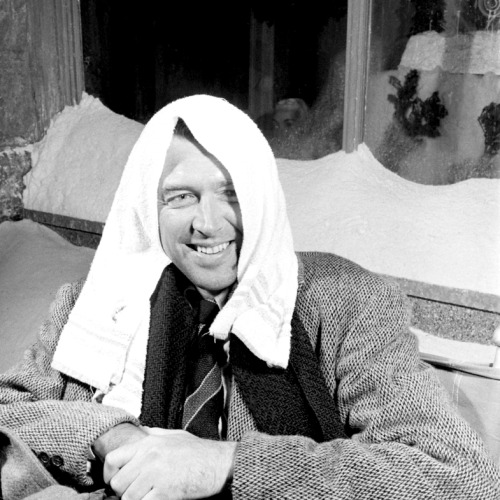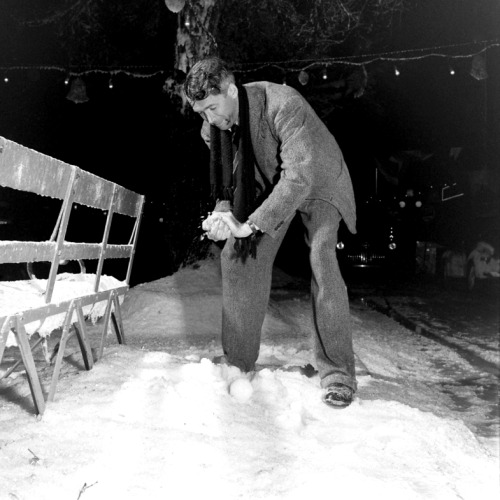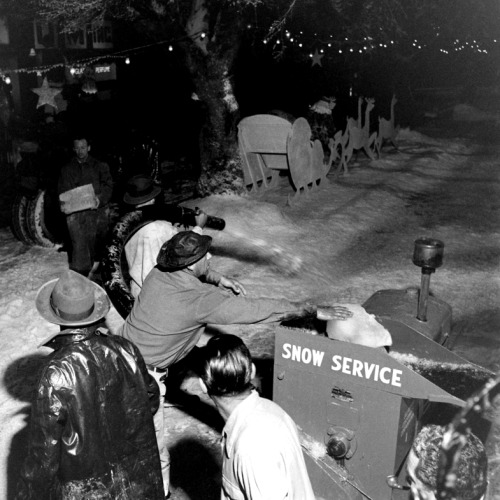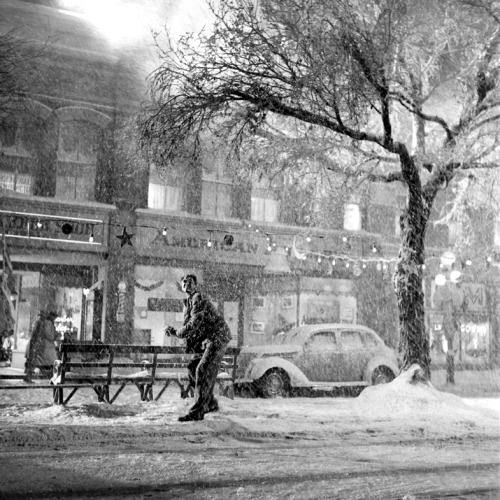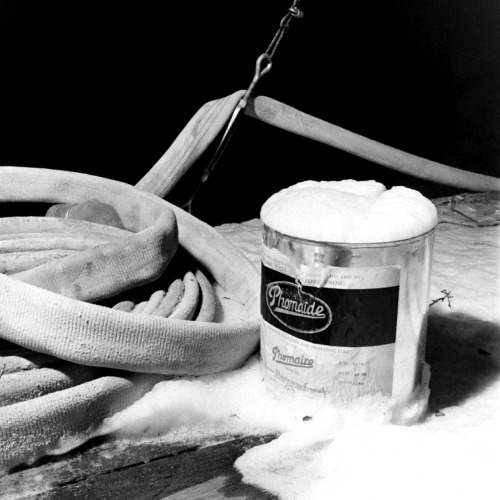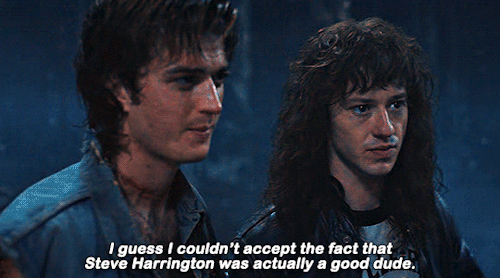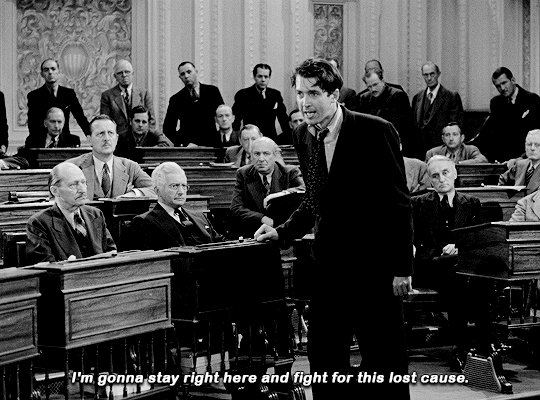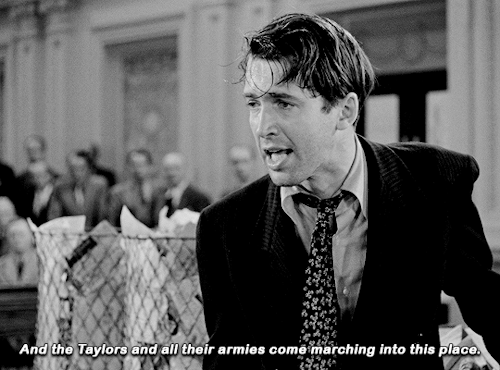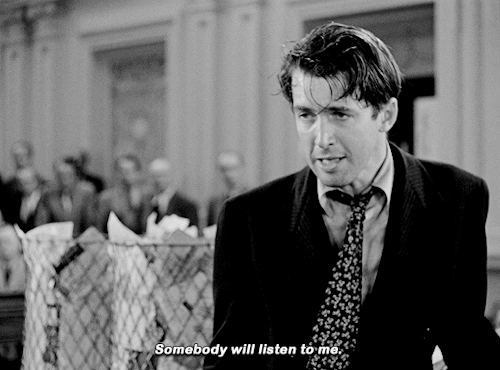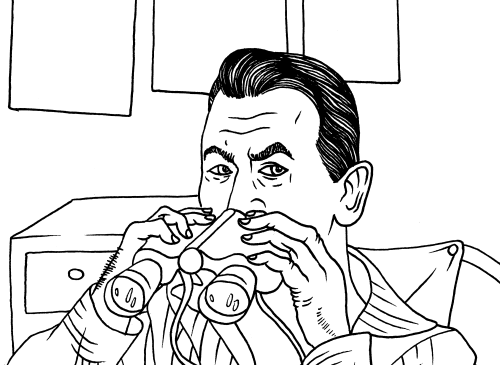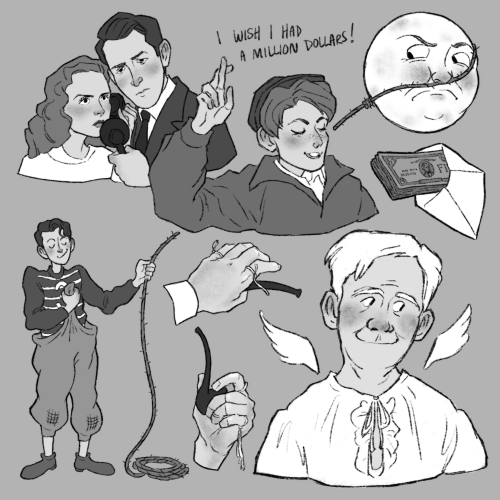#jimmy stewart
“What many movie buffs don’t know is that George Bailey’s bleak Christmas Eve was actually shot during a series of 90-degree days in June and July in 1946 on RKO’s ranch in Encino, California. The days were so hot that Capra gave the cast and crew a day off during filming to recover from heat exhaustion. In the famous scene on the bridge, before he saves Clarence the angel from the dark, swirling waters below, a suicidal George Bailey is clearly sweating — although Jimmy Stewart’s wonderful acting convinces us that fear and dread might well be the reason for that.”
Behind the scenes of It’s a Wonderful Life (1946)
Read more at LIFE
Post link
We all have our favorite Oscar winners that we love to watch over and over again. But there are numerous Oscar winners and nominees that have gained new life thanks to TCM, HBO Max and DVD that are definitely worth revisiting. Here are some of my favorites:
RANDOM HARVEST

I interviewed the legendary funny man Carl Reiner a few months before his death and the conversation drifted to RANDOM HARVEST (’42) and how much he loved the romance. Robert Redford is also a fan. In the 1990s, he was planning on doing a remake, and in 2014, it was announced that Julian Fellowes (Downton Abbey) was hired to pen a remake. The handsome MGM production based on James Hilton’s bestseller starring Ronald Colman and Greer Garson was a huge hit that year and was nominated for seven Oscars including Best Film, Actor for Colman, Actress in a Supporting Role for Susan Peters and Director Mervyn LeRoy.
Both Colman and Garson had great success in other Hilton adaptations – Colman starred in LOST HORIZON (’37) and Garson made her U.S. film debut and earned her first Best Actress Oscar nomination in GOODBYE, MR. CHIPS (’39). RANDOM HARVEST is often overlooked by the other big MGM film released in 1942, William Wyler’s MRS. MINIVER. Not only was the stirring drama about a British family attempting to survive the years of World War II a blockbuster at the box office, but it also won a striking eight Oscars.
But I think RANDOM HARVEST is the more engaging film. It’s hard not to fall in love with this romantic tale with Colman at his most dreamy as a shell-shocked amnesiac veteran of World War I (Colman was wounded in the global conflict) named Smith who falls in love and marries a loving young entertainer (Garson). But Smithy, as Garson’s Paula calls him, is hit by a car on his way to a job interview and wakes up with no memory of the past three years but does remember who he really is – an aristocrat by the name of Charles Rainier.
Will true love reunite these two? The sigh level is very high with RANDOM HARVEST and this love story has a very strong place in my heart.
NONE BUT THE LONELY HEART
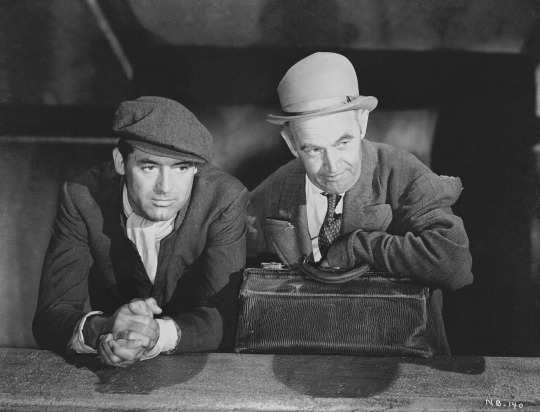
I’ve had more than a few people ask me why I like NONE BUT THE LONELY HEART (’44) so much. It’s depressing, they say. It’s downbeat, they say. But I think it’s a chance to see Cary Grant in a rare break out of his “Cary Grant” suave, sophisticated image. Adapted and directed by Clifford Odets from the novel by Richard Llewellyn (How Green Was My Valley), NONE BUT THE LONELY HEART casts Grant as Ernie Mott, a Cockney drifter who returns home to his Ma (Ethel Barrymore). When he learns that she’s dying of cancer, Ernie stays to help run her second-hand shop. But Ernie can’t stay out of trouble, joining forces with a gangster stealing cars and pursuing the mobster’s wife (June Duprez).
Meanwhile, his neighbor Aggie (Jane Wyatt) is madly in love with him and tries to save Ernie from a life of crime. The film was generally warmly received, earning four Oscar nominations and winning supporting actress for Barrymore. She shot her scenes during her two-week vacation from her Broadway triumph The Corn Is Green, and the Academy Award transformed the Broadway star into a much-in-demand film actress. She would go on to earn three more Oscar nominations.
Grant, who had earned his first Oscar nomination three years earlier for PENNY SERENADE (‘41), didn’t attend the Academy Awards where Bing Crosby won best actor for GOING MY WAY. Grant never earned another Oscar nomination, but received an Oscar honorary in 1970.
NIGHT MUST FALL
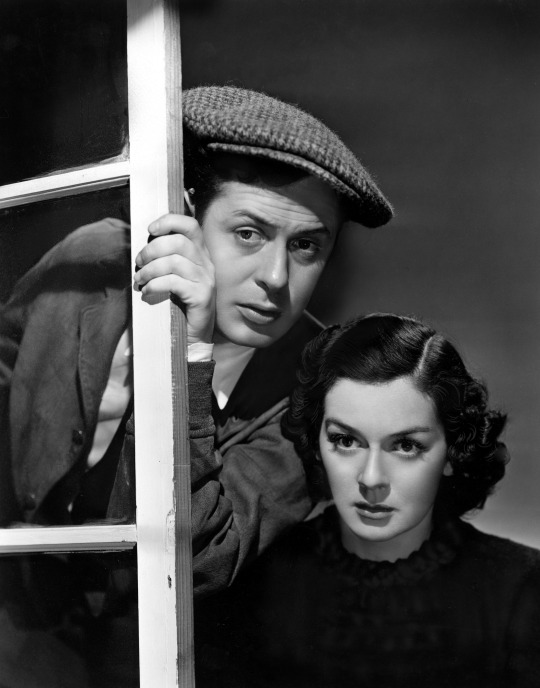
Handsome and charismatic Robert Montgomery was one of MGM’s top leading men in the 1930s, best known for his work in comedies including PRIVATE LIVES (’31) and FORSAKING ALL OTHERS (’34). Though he did an occasional dramatic part, nothing really stretched him as an actor until NIGHT MUST FALL (’37). Montgomery had long been bugging MGM head Louis B. Mayer for better roles. He supposedly allowed Montgomery to do NIGHT MUST FALL because the studio head thought the actor would be embarrassed when the movie failed. Montgomery later said, “they okayed me playing in it because they thought the fan reaction in such a role would humiliate me.” He went so far as to help subsidize the film’s production budget.
Based on the play by Emlyn Williams which ran on Broadway in 1936, NIGHT MUST FALL finds Montgomery playing Danny, a serial killer who just happens to have a trophy from his latest victim—her head—in a hatbox. Danny charms his way into the heart and home of a wealthy elderly woman (Dame May Whitty, reprising her London stage role). Rosalind Russell, who made five films with Montgomery, plays the elderly woman’s niece who has her suspicions about Danny but can’t convince her aunt that she’s in danger. Both Montgomery and Whitty earned Oscar nominations.
Though Montgomery returned to the comedy genre after NIGHT MUST FALL, he began directing films such as LADY IN THE LAKE (’46) and found great success in TV in the 1950s with the anthology series Robert Montgomery Presents, which often featured his daughter Elizabeth.
THE NAKED SPUR

Jimmy Stewart’s image took a 180 degree turn in the 1950s thanks to Alfred Hitchcock with REAR WINDOW (’54) and VERTIGO (’58), but most notably in the five Westerns he made with Anthony Mann. Far from the boy-next-door character he played pre-World War II, Stewart was transformed into conflicted, troubled men – anti-heroes who often could be as villainous as the bad guys who peppered these sagebrush sagas. (Mann also directed Stewart in three non-Westerns).
THE NAKED SPUR (’53), which earned a screenplay Oscar nomination for Sam Rolfe and Harold Jack Bloom, is my favorite of their collaborations. Stewart really digs deep into the character of Civil War veteran turned bounty hunter, Howard Kemp. He’s angry and bitter having lost his land during his conflict. Kemp hopes he can get his land back by working as a bounty hunter. And he’s doggedly determined to get outlaw Ben Vandergroat (a fabulously vile Robert Ryan). Along the way, he encounters two men (Millard Mitchell and Ralph Meeker) who join him on his journey. And when he finds Vandergroat, he also discovers he has a young woman (Janet Leigh) with him. Intelligent, often disturbing and brilliantly acted, THE NAKED SPUR is an exceptional exploration of the dark side of humanity.
Vertigo (La donna che visse due volte)
Regia/Directed by: Alfred Hitchcock
Sceneggiatura/Screenplay by: Alec Coppel, Samuel Taylor
Montaggio/Edited by: George Tomasini
Fotografia/Cinematography: Robert Burks
Rotten Tomatoes: 94%
Metacritic: 100
IMDb: 8,3
Anno/Year: 1958
#vertigo #ladonnachevisseduevolte #alfredhitchcock #hitchcock #jamesstewart #jimmystewart #kimnovak #sanfrancisco #frisco #psychologicalthriller #rottentomatoes #metacritic #imdb #moviemaking #movielover #cinematography #film #movie #saulbass #movieposter #hollywood #bernardherrmann #barbarabelgeddes #dollyzoom #vertigoeffect #hithcockmovies #georgetomasini #robertburks #cinematografia #editing
#christmasmovies
The Shop Around the Corner is a romantic comedy produced and directed by Ernst Lubitsch. Margaret Sullavan and James Stewart play two employees at a leathergoods shop in Budapest who can barely stand each other, not realizing they are falling in love as anonymous correspondents through their letters.
__________________________________________________________
Scrivimi fermo posta è una commedia romantica del 1940 prodotta e diretta da Ernst Lubitsch. Margaret Sullavan e James Stewart interpretano due commessi in un negozio di articoli di pelle a Budapest che non si sopportano, senza sapere che in realtà si stanno innamorando tramite le loro lettere in quanto corrispondenti anonimi.
Regia/Directed by: Ernst Lubitsch
Sceneggiatura/Screenplay by: Samson Raphaelson. Based on the 1937 Hungarian play Parfumerie by Miklós László
Montaggio/Edited by: Gene Ruggiero
Fotografia/Cinematography: William H. Daniels
Rotten Tomatoes: 100%
Metacritic: 96
IMDb: 8,1
Letterboxd: 4.1
Anno/Year: 1940
#theshoparoundthecorner #ernstlubitsch #lubitschmovies #jimmystewart #jamesstewart #christmas #christmasmovie #moviemaking #movielover #film #parfumerie #hungarianplay #movieadaptation #budapest #letters #youvegotmail #oldhollywood #goldenageofhollywood #blackandwhite #salesman #klaranovak #filmphotography #blackandwhitemovies #christmasmovies #mgmmovies #romanticmovies #romance #margaretsullavan #frankmorgan
Mr. Smith Goes to Washington
Regia/Directed by: Frank Capra
Sceneggiatura/Screenplay by: Sidney Buchman, Myles Connolly (uncredited). Based on “The Gentleman from Montana”, (unpublished story) by Lewis R. Foster
Montaggio/Edited by: Gene Havlick, Al Clark
Fotografia/Cinematography: Joseph Walker
Rotten Tomatoes: 96%
Metacritic: 73
IMDb: 8,1
Letterboxd: 4.0
Anno/Year: 1939
#mrsmithgoestowashington #jamesstewart #jimmystewart #jeanarthur #oldhollywood #frankcapra #politicalcomedy #clauderains #senator #senate #unitedstatessenator #academyawards #rottentomatoes #metacritic #movies #moviemaking #cinematography #cinematografia #saunders #clarissasaunders #filibuster #smith #jeffersonsmith #federalgovernment #washington #movielover #oldmovies #stewart #boyscouts #smithandsaunders








please like if you use.










please like if you use.
In tribute to last night’s Oscars, here’s the poster for 1940’s Philadelphia Story, which won Best Actor for Jimmy Stewart, Best Screenplay and Best Supporting Actor for Metallo the Mechanical Man (who reprised his role from the original Broadway production).
Post link

Vertigo (1958) dir. Alfred Hitchcock
It’s December aka the best time of year to watch It’s a Wonderful Life (1946), dir. Frank Capra :)
Post link

Jimmy Stewart on the set of Winchester ‘73, via Vanguard of Hollywood.

